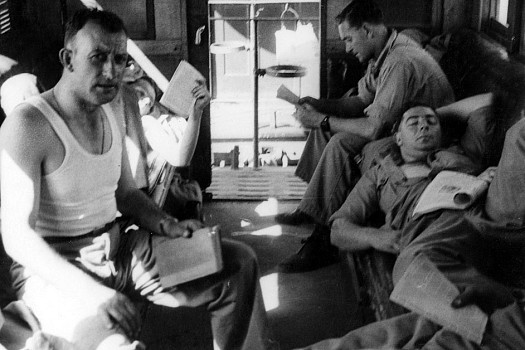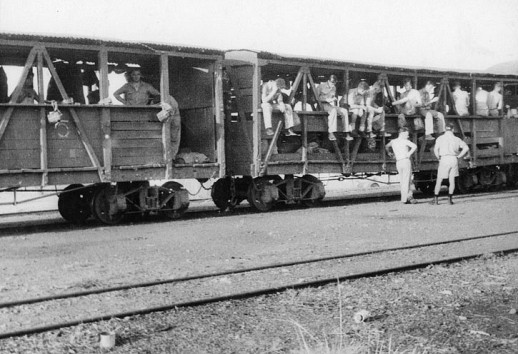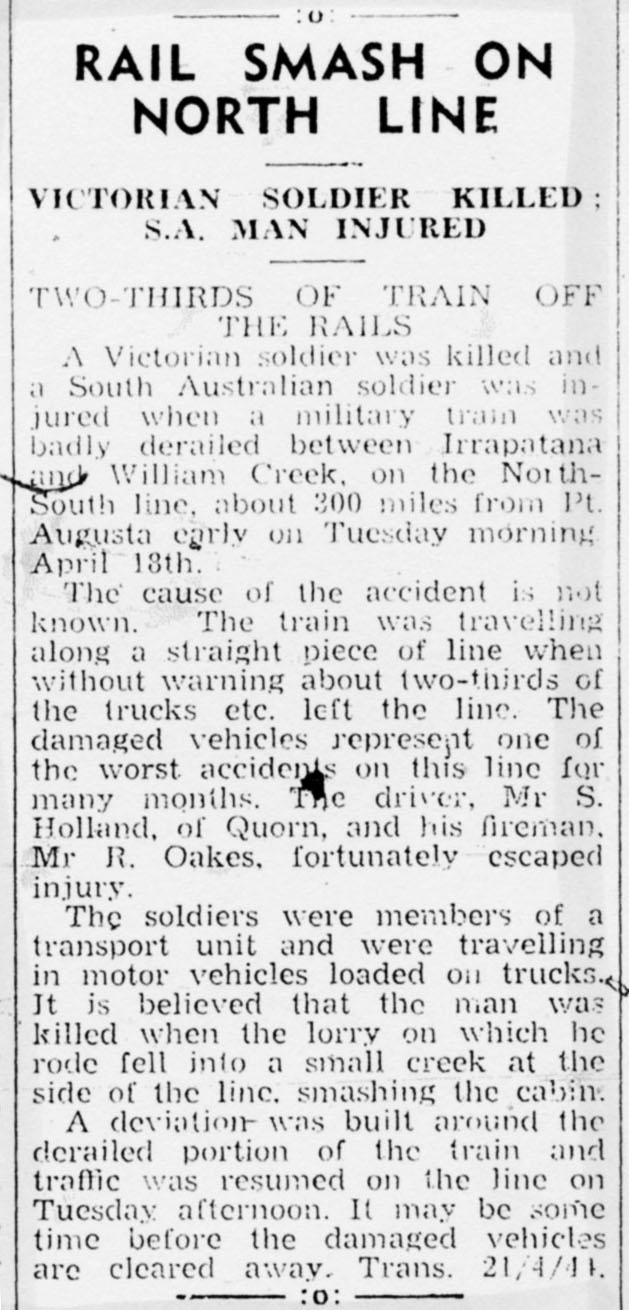
Seventy years ago, the Central Australia Railway carried troops, vehicles and supplies to Perth and Darwin where they were shipped out to the various campaigns of World War II.
While vehicles and supplies were carried on flat trays, troops endured long days in cattle trucks or wooden carriages. Their seats ran from end to end and were called "side seaters" with a verandah at each end. They were described by troops as "worn out and overcrowded" with one saying it was "like going back to the nineteenth century."1
While the journey may have been uncomfortable, it certainly was scenic passing by the old ruins of the Kanyaka, Gordon and Wilson townships.
Once they reached Quorn troops were tired and hungry. While the local CWA fed them, army MPs stationed themselves outside the town's four pubs to make sure none of them popped in for a quick pint before leaving town.2
Restless troops, local larrikins and good samaritans

Boredom was a challenge for the troops and many left their mark on the carriages they travelled with their name and serial number etched in to the seats and walls.
This was uncovered decades later in Car 5—a South Australian Railways first class 'short tom' carriage from 1905.
To help combat the restlessness of the troops, a call out was made from the secretary of Port Augusta Unit of the Fighting Forces Comfort Fund for books for those passing through.3
But the locals were not always so generous. As one soldier recalled:
We arrived for a short stop, about 9pm, at Peterborough, where some enterprising kids offered to get some pies and pasties for us from a local source and return with them before we departed. One chap gave a kid a pound note to get some pies. Needless to say, he never saw his quid again, or his pies, and all the way to Alice he would stick his head out of the window and call out "Where’s my pies?" Much to our amusement!4
Once they reached Hawker the soldiers caught their first glimpse of the Flinders.
At Hawker railway station, soldiers picked up souvenirs by swapping tins of bully beef for boomerangs from the local Adnyamathanha people.5

Danger on the track to war
On the way to war the spirit of the troops was high. Many had signed up for what they believed to be an adventure of a lifetime – but it was not always a smooth ride.
One train had two-thirds of its vehicles derail 300 miles from Port Augusta on the Alice Springs line.6 The driver of a truck that was being carried by the train was riding in his truck's cabin at the time of the accident, when it fell into a small creek, killing him. In yet another tragic story, a soldier on leave slipped beneath the wheels while trying to board a moving train at Burra.7
1 Jim Claridge and Keith Saunders quoted in Smith, Alan, "Convoys Up the Track", p. 56
2 Reg Mayes, quoted in Pearce, Kenn, "Riding the Wire fence to the Alice", p. 32
3 "Books Wanted to Place on Train", Transcontinental, 10 April 1942
4 WB Sage quoted in Pearce, Kenn, "Riding the Wire Fence to Alice", p. 37
5 Smith, Alan, "Convoys up the track : a history of 121st Australian General Transport Company (AIF) 1941–1946", 1991, p. 56
6 "Rail Smash on North Line", Quorn Mercury, 28 April 1944
7 "Soldier Killed at Burra", The Chronicle, 11 Feb 1943

.jpg)
.jpg)


